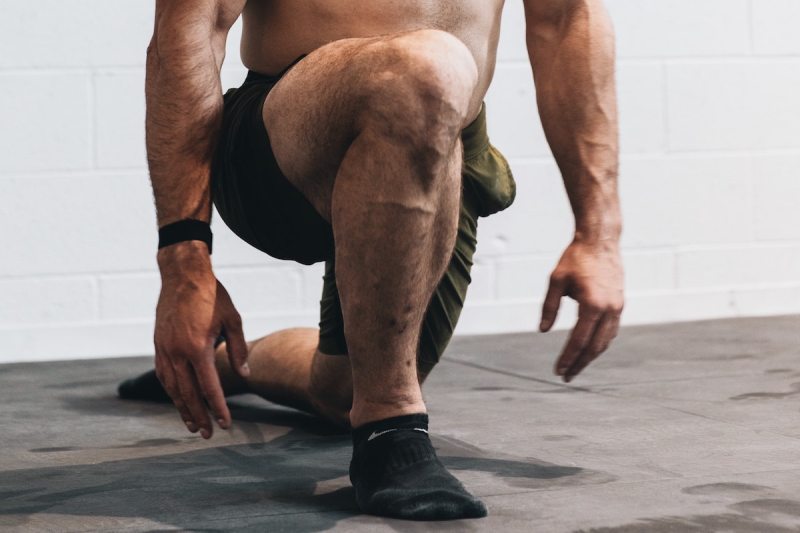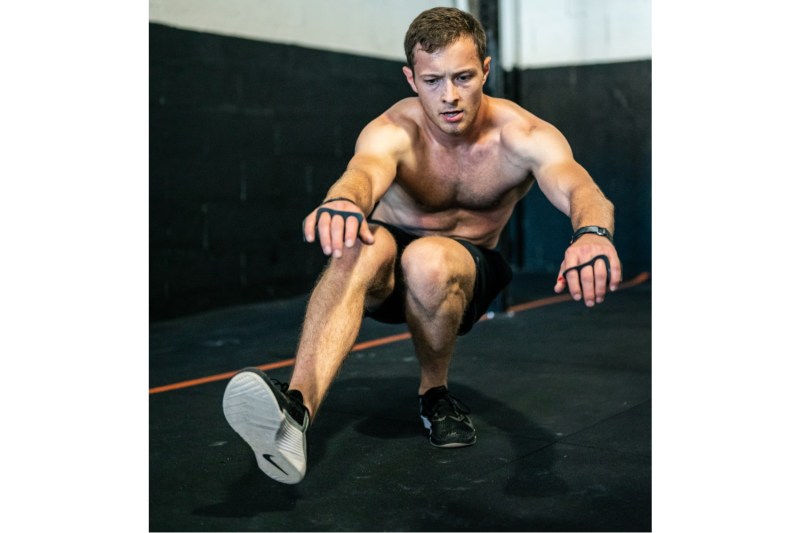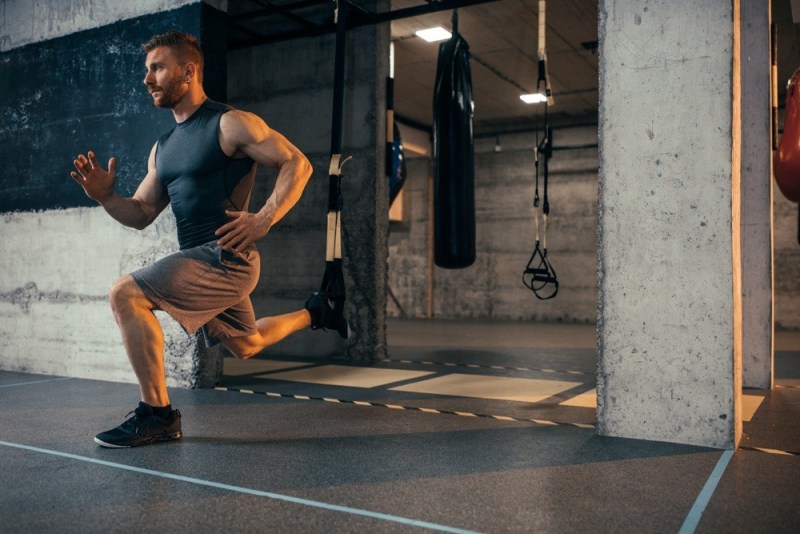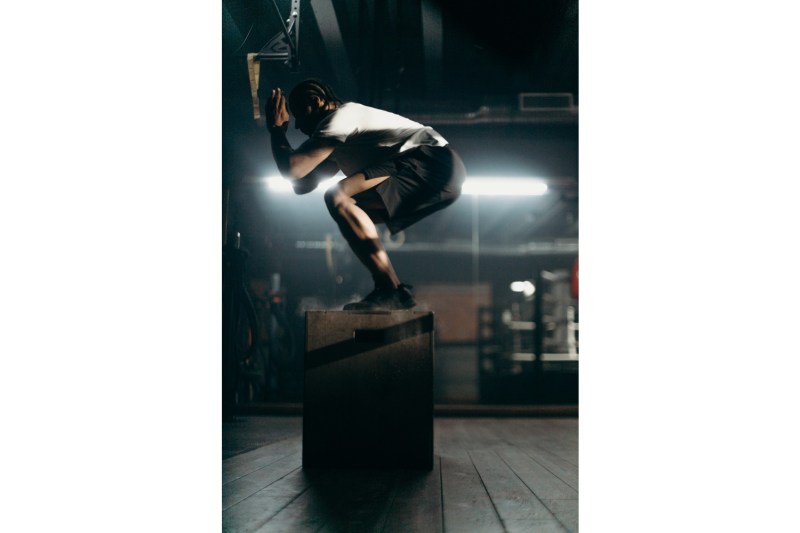
Whether you prefer running, skiing, hiking, shooting hoops with friends, or simply chasing your kids around the yard, strong quads are required! The quads are a group of four muscles that run from your hip to your knee on the anterior part of your leg. You use your quads for so many activities, and luckily, there are numerous quad exercises at home you can do to strengthen the muscle group.
Most people assume that the best quad exercises require access to a gym filled with fancy weight machines, squat racks, and barbells with heavy weights. While you will want some form of resistance (dumbbells, kettlebells, etc.) for hypertrophy training to build larger quads, there are plenty of effective quad exercises you can perform at home with minimal equipment.
That said, if you plan to do the bulk of your leg workouts at home, you might want to invest in a good set of adjustable dumbbells and resistance bands to give your muscles the stimulus they’ll need to get stronger. In the meantime, we’ve got you covered with the best exercises you can perform at home with just your body weight or a few resistance bands. Keep reading to get started sculpting and strengthening your quads.

How often should you train your quads?
If you can find time to do each of the exercises we recommend below on a weekly basis, then great! However, you never want to overdo it, as this can lead to injury and overtraining that will actually slow down your progress. As with any other muscle group, the quads need at least one day in between training sessions. Therefore, you could maintain a training schedule of two to three days per week of quad work. If you can only get in one workout session per week, try to do at least five of the exercises below to maximize your results.

Bodyweight squats
Though you’re certainly going to feel the burn when using a heavy barbell or dumbbells at the gym, you can still get some of the benefits of squats with just your body weight. That said, if you have weights at home, feel free to use them to make this quad exercise more challenging.
Equipment: None or dumbbells
Execution
- Stand upright with your feet hip-width apart, shoulders back, chest up, and core engaged.
- Bend your knees and sit your hips all the way back as if reaching your butt back to sit in a chair while driving your arms forward in front of you for counterbalance.
- When your thighs are parallel to the floor, press through your heels to stand back up.
- Complete 20 to 50 reps.
Prisoner squats
This variation of a bodyweight squat is slightly more challenging because it requires more core activation for balance and targets your quads more since you can’t use your arms for momentum.
Equipment: None
Execution
- Stand upright with your feet hip-width apart, shoulders back, chest up, and core engaged with your hands laced together behind your head and elbows fanned out to the sides.
- Bend your knees and sit your hips all the way back as if reaching your butt back to sit in a chair. Contract your abs and glutes to stay balanced and upright.
- When your thighs are parallel to the floor, press through your heels to stand back up.
- Complete 20 to 30 reps.

Single-leg squats
Single-leg squats are one of the more difficult quad exercises because they require tremendous leg strength, core activation, and balance. A single-leg squat is often sufficiently challenging with just your body weight, but you can also load up with dumbbells as you get stronger.
Equipment: None or dumbbells
Execution
- Stand upright with good posture and your feet slightly wider than shoulder-width apart.
- Lift your left leg and use your abs to draw it up towards your chest and hold it there, or bend it behind your right leg and let it hover above the ground. You can also extend it straight in front of your body.
- Bend your right knee and sit your hips all the way back as you drop down into a single-leg squat.
- When your right knee is bent to 90 degrees, and your thigh is parallel to the ground, press through your right heel to stand back up.
- Complete 10 to 15 reps and then switch sides.

Walking lunges
You’ll need a little room for this quad exercise, but take it outside or get creative and meander around your home as you go.
Equipment: None
Execution
- Stand upright with good posture, your gaze forward, and your hands on your hips.
- Take a giant step forward such that when you drop down into a lunge, your front and rear knee can bend to 90 degrees without your front knee going forward beyond your toes.
- Drop into a deep lunge, ensuring your front shin is perpendicular to the floor, and your thigh is parallel to the floor.
- Keep walking forward with a lunge for each step.
- Complete 50 lunges.
Step-ups
Step-ups are a compound movement that strengthens your quads, glutes, hamstrings, and calves. You can use a stair in your home, a sturdy chair or couch, or your bed. You could even consider using a park bench outside! Use dumbbells, if available, to boost the difficulty of this quad exercise.
Equipment: Step, chair, or bench, and dumbbells, if available
Execution
- Stand facing a chair, bench, or step that is roughly knee height or slightly lower. If you’re using standard stairs, aim to skip one full stair so that you step up to the stair two steps higher.
- Engage your core and glutes as you step up onto the stair or chair with your right foot.
- Step your left leg up onto the same step.
- Step back down with your right foot first, then the left.
- Continue leading with the right foot for 15 to 20 reps, and then switch sides.

Split squats
You can get a good burn in your quads by performing long sets of rapid reps of this leg-strengthening move. If you have dumbbells, you can also hold onto those to ramp up the intensity.
Equipment: None or dumbbells
Execution
- Stand upright with good posture and your hands on your hips.
- Place your left foot behind you on an elevated surface.
- Take a big step forward with your right leg such that when you drop down into a lunge, both knees can bend to 90 degrees without your front knee (the right knee) going forward beyond your toes.
- Drop down into your lunge, and pause momentarily.
- Power back up by engaging your quads and glutes.
- Keep your feet stationary in this staggered split squat position and simply continue dropping down and up into a lunge.
- Complete 25 split squats and then switch sides.

Jump squats
Jump squats turn regular squats into a plyometric exercise, helping you develop the power, speed, and force generation you need in your quads for jumping prowess.
Equipment: None
Execution
- Stand with your feet hip-width apart, core engaged, chest up, back straight, and arms at your side.
- Perform a squat by bending your knees and sitting your butt back as if reaching to sit in a chair while driving your arms forward.
- Push through your heels and then your midfoot and toes to explode upward as high as you can jump, straightening your knees and hips and using your arms to power your body up as high as possible.
- As soon as you land, bend your knees to cushion the landing, transitioning immediately into a full squat to begin the cycle again.
- Move quickly and powerfully from rep to rep.
- Complete 15 to 20 reps.
Leg extension squeezes
The quad muscles are responsible for knee extension, and you’ll isolate that motion with this exercise. It’s a great quad exercise for preventing knee pain. Use a heavy ankle weight, if possible.
Equipment: Ankle weights
Execution
- Lie on your back with a towel rolled up under your right knee. Rest your right heel on the floor. Your left knee should be bent with your left foot planted flat on the floor.
- Use your quad to straighten your right leg fully such that your heel lifts off the ground.
- Squeeze your quads to hold this raised position for five seconds.
- Relax to lower your leg back down.
- Complete 15 reps per side.
Heel drops
If your quads have ever been sore after hiking down a mountain, you’re probably aware of how involved they are in decelerating knee flexion. This quad exercise trains the eccentric motions of the quads and also improves balance and coordination. You can make the exercise more difficult by holding weights, if available.
Equipment: Stair, box, or curb about 8 inches off the ground and an optional dumbbell
Execution
- Stand on a step or curb facing the stair or ground below it.
- Lift your left foot off the stair so that your heel is hovering just above the stair and your toes pointing up towards the ceiling. Your knee should be extended.
- Bend your right knee as if you’re going to step down to the stair below, but just hover the left heel over the ground or stair below without actually touching it.
- Use your core to stay balanced, and then power yourself back up with the planted right leg.
- Complete 12 to 15 reps per side, moving in a slow and controlled fashion.
Single-leg wall sits
Another good quad exercise for home workouts is a single-leg wall sit. You don’t need any equipment, and you can even multitask, holding the position while on the phone or watching TV.
Equipment: None
Execution
- Stand with your back to a bare wall.
- Squat down so that your back is against the wall, your thighs are parallel to the floor, and your shin is vertical.
- Once down in your squat position, lift one leg up and hook it around the other so that only one leg is supporting you.
- Hold the position for one to two minutes and then switch sides. Be sure to keep your core engaged and breathe steadily throughout the exercise.



